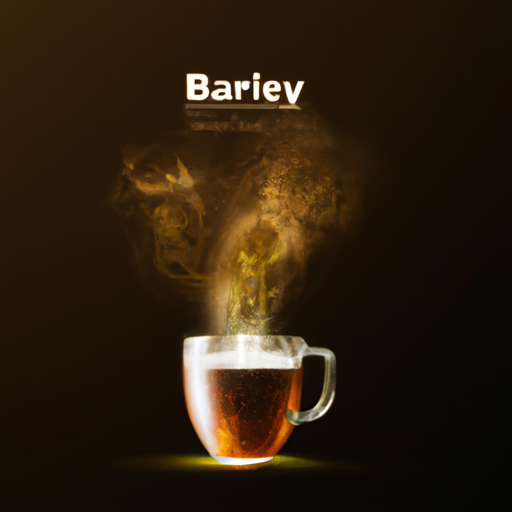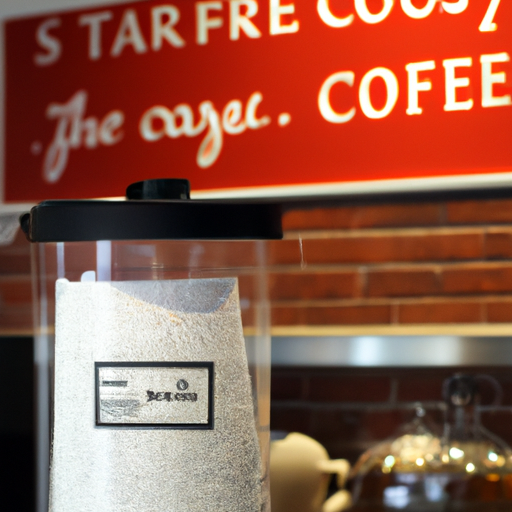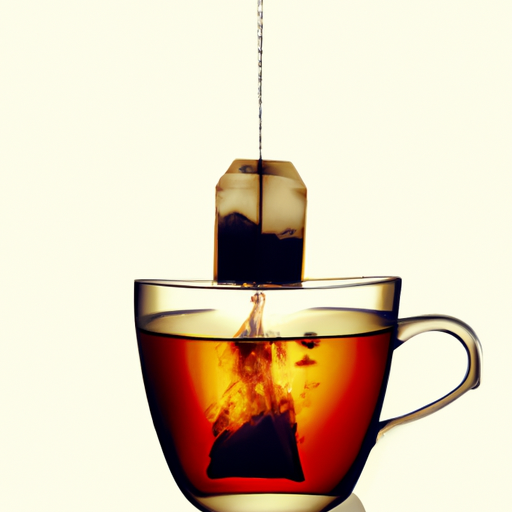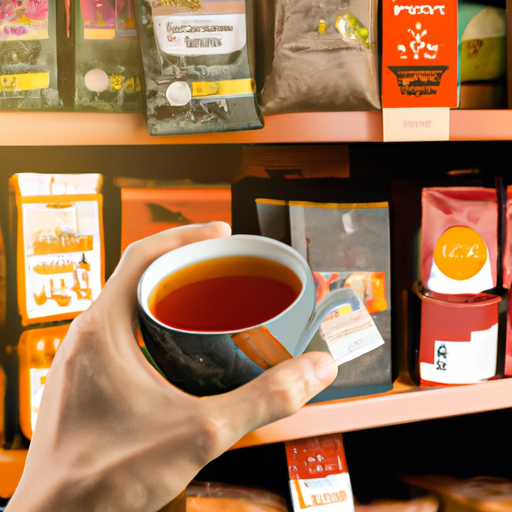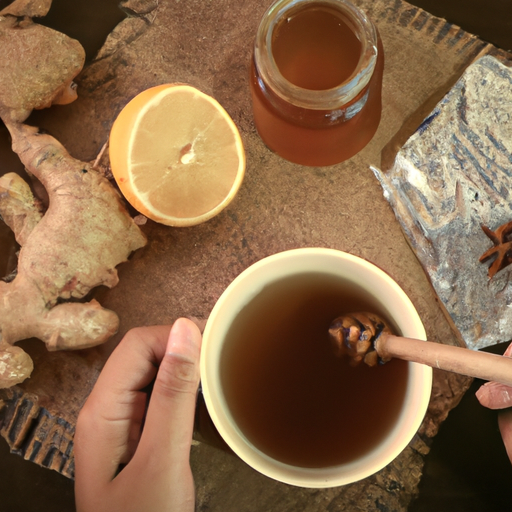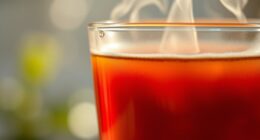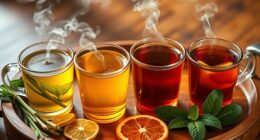Ah, barley tea! Such a tasty drink, though often not given the credit it deserves. Honestly, when you first come across the term ‘barley tea,’ it doesn’t really seem like it would be the tastiest beverage out there. However, believe me when I tell you, its flavor is remarkably memorable and one that will linger with you.
As someone who loves exploring different flavors and beverages, I was initially skeptical about trying barley tea. However, after my first sip, I was hooked. It has a unique and complex flavor profile that hits all the right notes – slightly nutty and earthy with a subtle sweetness that lingers on your tongue.
But don’t just take my word for it – let’s dive deeper into what makes barley tea such a treat for your taste buds.
Key Takeaways
- Barley tea has a strong roasted grain taste with notes of caramelized sugar and hints of nuttiness.
- It is a great option for staying hydrated throughout the day and promoting good digestive health.
- Drinking barley tea can help regulate body temperature, improve digestion, reduce fatigue, boost cognitive function, and promote healthy skin.
- DIY barley tea has a unique nutty taste with a hint of bitterness and can be enjoyed hot or cold.
Brief Overview of Barley Tea
You’ll love the nutty, slightly bitter taste of barley tea, which is made from roasted barley grains. This traditional Asian drink has been around for centuries and has gained popularity in recent years due to its unique flavor and health benefits. It is also known as mugicha in Japan and boricha in Korea.
The history of barley tea can be traced back to ancient China where it was used for medicinal purposes. It later spread to other parts of Asia, including Japan and Korea, where it became a popular everyday beverage.
The brewing process involves roasting whole barley grains until they’re dark brown or almost black, then steeping them in hot water. The resulting infusion is a rich brown color with a distinct aroma that is both earthy and nutty.
Barley tea’s flavor profile is complex and varies depending on the quality of the grains used and the brewing method employed. Generally speaking, it has a strong roasted grain taste with notes of caramelized sugar and hints of nuttiness. Some people describe it as having a slightly smoky flavor while others find it more akin to coffee or black tea.
In any case, barley tea’s multidimensional taste makes it an interesting alternative to traditional teas or coffee drinks without being overpowering or too intense.
Flavor Profile of Barley Tea
When it comes to describing the flavor of barley tea, there are a few key points to consider. Personally, I find that the nutty and sweet notes in barley tea make for a really enjoyable drinking experience. However, some might pick up on an earthy or slightly bitter taste as well.
For those who are curious about what barley tea tastes like compared to other beverages, I’d say that it’s somewhere in between green tea and coffee – not too strong or overpowering, but still flavorful enough to sip on throughout the day.
Nutty and Sweet Flavor
The nutty and sweet flavor of barley tea is a delightful surprise for those who haven’t tried it before. When I first tasted barley tea, I was taken aback by its unique blend of flavors.
The sweetness comes from the natural sugars in the roasted barley grains, while the nuttiness adds depth to every sip. It’s a taste that’s hard to describe, but once you try it, you’ll understand why so many people love this drink.
If you’re interested in making your own barley tea recipe at home, be sure to use high-quality roasted barley kernels to ensure a rich and robust flavor profile. Rest assured that barley tea contains very little caffeine compared to other types of tea or coffee. With all these benefits and amazing flavors packed into one cup, it’s no wonder why barley tea has become such a popular choice among health-conscious individuals.
Moving on to the next subtopic about the earthy or slightly bitter taste of barley tea, it’s important to note that this flavor is also what gives the drink its unique character.
Earthy or Slightly Bitter Taste
As you take a sip of this infusion, your taste buds are greeted with an earthy undertone that adds depth and complexity to the overall flavor profile. It’s not overpowering, but it is noticeable enough to give the tea a unique characteristic.
This slightly bitter taste comes from the barley grains used in brewing the tea, which are roasted before being steeped in hot water. The amount of bitterness can vary depending on how long the barley is steeped and at what temperature, so different brewing methods can result in slightly different tastes.
Despite its slight bitterness, barley tea is still a popular drink in many countries around the world. In fact, there are even popular barley tea brands like Ito En and Sangaria that offer their own unique blends of this beverage.
While some people may prefer sweeter tasting teas or more traditional options like coffee or black tea, I find that barley tea’s earthy flavor makes for a refreshing change of pace. And when compared to sugary sodas or energy drinks, it’s definitely one of the healthier options out there.
Comparisons to Other Beverages
You might be surprised at how barley tea compares to other popular drinks in terms of health benefits and flavor complexity. While coffee is known for its robust and sometimes bitter taste, barley tea offers a milder, nuttier flavor that is often compared to roasted grains or nuts. Unlike coffee, which can cause jitters and crashes due to high caffeine content, barley tea contains no caffeine but still provides a natural energy boost.
When it comes to comparing tea and barley tea, taste differences are also noticeable. Tea tends to have a more floral or vegetal taste depending on the variety, while barley tea offers a richer, earthier flavor profile. Some drinkers may prefer the lighter taste of traditional teas, while others enjoy the heartier notes found in barley tea. Ultimately, it comes down to personal preference as both options offer unique tastes worth exploring.
Barley tea’s complex flavor isn’t the only reason why it’s gaining popularity among health-conscious consumers. It also boasts numerous health benefits that make it an ideal choice for those looking to incorporate healthier beverages into their diets.
Health Benefits of Barley Tea
I absolutely love drinking barley tea, not only for its unique flavor but also for its numerous health benefits.
As a rich source of antioxidants, it helps fight against cell damage and aging.
Additionally, barley tea is great for staying hydrated throughout the day and promoting good digestive health.
Overall, incorporating barley tea into my daily routine has been a fantastic way to support my overall wellness.
Antioxidant Properties
Barley tea’s antioxidant powers are like a superhero, fighting off harmful free radicals with ease. Scientific research has shown that barley tea is packed with antioxidants, which protect our cells from damage caused by these free radicals.
These antioxidants have been found to be effective in reducing the risk of several chronic diseases such as cancer and heart disease. In addition to its antioxidant benefits, barley tea is also a great option for staying hydrated throughout the day.
As we know, staying hydrated is essential for maintaining good health and keeping our bodies functioning properly. By incorporating barley tea into your daily routine, you can reap the benefits of both hydration and antioxidant protection.
Hydration
Staying properly hydrated is crucial for optimal health, and luckily, barley tea can help with that. As someone who struggles to drink enough water throughout the day, I’ve found that drinking barley tea helps me stay hydrated while also enjoying a refreshing beverage.
Here are some benefits of hydration and why it’s important to stay hydrated:
- Helps regulate body temperature
- Improves digestion
- Reduces fatigue
- Boosts cognitive function
- Promotes healthy skin
Drinking barley tea can help you achieve these benefits by providing a tasty alternative to plain water. Plus, its low calorie content makes it a great option for those looking to maintain or lose weight.
As we move into the next section about digestive health, it’s important to note that staying hydrated plays a key role in maintaining good digestive function. With that in mind, let’s take a closer look at how barley tea can benefit our digestive systems.
Digestive Health
To maintain good digestive health, I make sure to consume plenty of fiber and water. Constipation affects a significant portion of adults in the United States, and I don’t want to be part of that statistic. One way I ensure a healthy gut is by incorporating foods rich in fiber such as whole grains, fruits, and vegetables into my diet. These foods help regulate bowel movements and prevent constipation.
Another important aspect of digestive health is maintaining a balanced gut flora. This can be achieved by consuming probiotics found in fermented foods like yogurt or kimchi or through supplements. Digestive enzymes also play a crucial role in breaking down food for better absorption of nutrients. Incorporating these into my diet has helped me improve my digestion overall. With proper nutrition and care for my gut, I feel more energized and less bloated throughout the day.
Transitioning into brewing tips: Now that we’ve discussed how certain foods can benefit our digestive health, let’s talk about how to brew barley tea properly for maximum enjoyment!
Brewing Tips
When brewing your barley tea, don’t be afraid to experiment with different steeping times and temperatures to find the perfect balance of flavor. Here are a few tips that I’ve found helpful:
-
Water temperature: Barley tea is best brewed using hot water that’s just below boiling point. This allows the tea to release its full flavor without becoming too bitter or astringent.
-
Steeping time: The length of time you steep your barley tea will depend on personal preference and the type of barley used. Generally, steeping for 5-10 minutes should be enough to achieve a rich, full-bodied flavor.
-
Types of barley used: There are various types of barley used in making barley tea, each with its own unique flavor profile. Some popular varieties include roasted barley, unroasted barley (also known as green barley), and pearl barley. Experiment with different types to find your favorite!
As you explore the world of brewing your own barley tea, keep in mind that there are many variations of this beloved beverage out there waiting to be discovered!
Next, we’ll delve into some exciting ways to mix things up and create new flavors that’ll delight your taste buds.
Variations of Barley Tea
After reading about the best way to brew barley tea, I couldn’t wait to try it out for myself. It was a surprisingly easy process, and the result was a delicious and refreshing beverage.
But as I started to explore more about barley tea, I discovered that there are many different ways to enjoy it. One of the most interesting things I learned was that barley tea can be enjoyed either hot or cold. While I typically prefer my tea hot, I found that chilled barley tea was just as enjoyable on a hot summer day. In fact, some people even prefer it cold all year round!
Additionally, there is also the option of sweetened or unsweetened barley tea. Depending on your preference, you can add sugar or honey to create a sweeter taste. Personally, I prefer my barley tea unsweetened and served over ice on a warm afternoon. The natural nutty flavor of the roasted grains is enough for me to enjoy without any added sweetness. However, everyone’s taste buds are different and it’s important to experiment with different variations until you find what works best for you.
As I continue my exploration of this unique drink, one thing has become clear – barley tea has significant cultural significance in various countries around the world. From Korea to Japan and beyond, this simple yet flavorful beverage has been enjoyed for centuries in homes and cafes alike.
Let’s dive deeper into its cultural significance next.
Cultural Significance
Interestingly enough, this simple beverage has played an important role in the cultural traditions of many countries. Barley tea has a rich history that dates back centuries and is deeply rooted in Asian culture. In Japan, barley tea or mugicha is a popular summertime drink that is served both hot and cold. It is commonly found in vending machines and convenience stores across the country, making it easily accessible to everyone. Koreans also have a strong affinity for barley tea, which they call boricha, and consider it to be a healthy alternative to sugary drinks.
The cultural significance of barley tea extends beyond just its consumption as a refreshing beverage. In Korea, it was traditionally used as an offering during ancestral ceremonies and rituals. Similarly, in China, barley tea was believed to have medicinal properties and was often used as an herbal remedy for various ailments such as indigestion and fever. The practice of brewing barley tea at home using roasted grains is still prevalent today among many households in Asia.
Overall, the historical significance of barley tea cannot be overlooked when considering its popularity today. Its use in traditional ceremonies and rituals along with its medicinal properties have solidified its place in Asian culture for generations to come. In the next section about where to buy barley tea, I will discuss some easy ways you can get your hands on this delicious beverage without having to take any complicated steps or go out of your way too much.
Where to Buy Barley Tea
I’ve found that there are many places to buy barley tea, depending on your location and preferences. Online retailers such as Amazon and Asian food websites offer a wide range of options, including different brands and flavors.
Specialty stores like Japanese or Korean supermarkets often carry barley tea in both loose leaf and pre-packaged forms. And if you’re lucky enough to have access to international markets, they may also stock a variety of barley tea blends from different countries.
Online Retailers
You’ll find that online retailers offer a vast selection of barley tea varieties, allowing you to explore different flavors and intensities. Some of the best online retailers for purchasing barley tea include:
-
Amazon: With its wide range of products, Amazon offers an extensive selection of barley teas from various brands. You can also read customer reviews to help you choose the best one for your taste buds.
-
Tealyra: This online retailer specializes in loose leaf tea and has a unique collection of organic barley teas. Their shipping options are fast, reliable, and affordable.
-
The Tea Spot: Known for their premium quality teas, The Tea Spot has a variety of organic barley teas that are hand-picked and processed naturally. You can choose from different packaging sizes according to your preference.
-
My Korean Kitchen: As the name suggests, this online store features traditional Korean foods including barley tea. They have both roasted and unroasted versions available with excellent customer service.
-
Ito En: A well-known Japanese brand that sells authentic green tea and other beverages including barley tea. They use high-quality ingredients with no artificial flavors or preservatives.
If you’re looking for convenience and variety when it comes to buying barley tea, shopping at an online retailer is definitely worth considering. However, if you prefer a more personalized experience or want to try before you buy, visiting specialty stores might be the next step.
Specialty Stores
If you’re feeling adventurous and want to elevate your taste buds, step into one of these specialty stores for a unique selection of handcrafted blends and rare finds. These stores are dedicated to providing customers with the best quality barley tea from around the world. Each store has its own distinct atmosphere, offering an array of products that cater to every palate.
One thing that sets specialty stores apart is their ability to create unique blends of barley tea. They experiment with different ingredients and flavors to develop teas that are not only delicious but also beneficial for health. Some examples include roasted barley tea with ginger or cinnamon, green barley tea with mint or lemon, and hulled barley tea with rose petals or chamomile. With these distinctive offerings, it’s no wonder why people seek out these specialty stores for their next cup of barley tea.
As much as I love exploring local specialty stores, I also enjoy browsing international markets for new experiences.
International Markets
I’ve always been fascinated with the different tastes and flavors of tea from around the world. After exploring specialty stores, I decided to broaden my horizons and look for barley tea in international markets.
It’s amazing how different countries have their own ways of preparing and enjoying this beverage. Here are a few things I learned about barley tea consumption trends in different countries:
-
In Japan, barley tea is known as mugicha and is often consumed cold during the summer months.
-
In Korea, boricha is made with roasted barley kernels and is a staple drink served with meals.
-
Barley tea is also popular in China, where it’s believed to have health benefits such as improving digestion and lowering blood pressure.
-
According to import/export statistics, the United States has seen an increase in demand for barley tea over recent years due to its unique flavor profile.
It’s fascinating to see how something as simple as a cup of tea can vary so much across cultures. Now that I’ve explored international markets, I’m excited to try making my own homemade version of barley tea.
DIY Barley Tea
Mixing roasted barley with boiling water creates a nutty and slightly bitter aroma that fills the kitchen, as DIY barley tea is being made. Making your own barley tea at home is not only easy but also cost-effective. All you need are some roasted barley grains, hot water, and a teapot or infuser.
To start, measure out about 1/4 cup of roasted barley per liter of water and rinse them in cold water before placing them in your teapot or infuser. Next, add hot water to the container and let it steep for about 10-15 minutes. The longer you steep the tea, the stronger the flavor will be.
When the time is up, strain out the barley grains and discard them. Your DIY barley tea is now ready to enjoy! It has a unique nutty taste with a hint of bitterness that can be enjoyed both hot or cold. Adding sweeteners such as honey or sugar can balance out any bitterness if desired.
Overall, brewing your own barley tea using simple DIY tips like these can create an enjoyable and healthy beverage that’s perfect for any occasion. Not only does it taste great but it’s also packed with antioxidants and other health benefits that make it a great alternative to sugary drinks. So why not try making some yourself today?
Frequently Asked Questions
Are there any side effects or risks associated with drinking barley tea regularly?
As someone who regularly drinks barley tea, I can attest to its numerous health benefits. However, it’s important to note that any food or drink consumed in excess can have negative effects on the body.
When consumed in moderation, barley tea can provide a variety of vitamins and minerals such as vitamin B and iron, which contribute to overall health and wellness. Additionally, there are various brewing techniques that can affect the taste and potency of the tea.
Personally, I prefer steeping my barley tea for longer periods of time to enhance its flavor and maximize its nutritional benefits. Ultimately, incorporating barley tea into your diet can be a great way to improve your health – just make sure not to overdo it!
How does the caffeine content of barley tea compare to that of coffee or black tea?
Caffeine comparison-wise, barley tea has significantly less caffeine than coffee or black tea. In fact, it’s considered a caffeine-free drink.
However, this doesn’t mean that it lacks flavor. Barley tea has a unique nutty and slightly sweet taste that is quite refreshing. It’s not overpowering like some teas can be and has a pleasant aftertaste.
I personally enjoy drinking barley tea as an alternative to coffee or other caffeinated drinks in the afternoon when I want something warm and comforting without the jitters associated with high caffeine intake.
Overall, while barley tea may not pack the same energy boost as coffee or black tea, its flavor profile makes it a great option for those looking for a tasty and soothing beverage.
Can barley tea be used as a substitute for coffee or other caffeinated beverages?
I’ve found that barley tea can be a great substitute for coffee or other caffeinated beverages. Not only does it give me an energy boost without the jitters, but it also has numerous health benefits.
One anecdote that comes to mind is when I introduced my friend to barley tea as a replacement for her daily coffee habit. She was hesitant at first, but after trying it out she was pleasantly surprised by how much she enjoyed the taste and how much better she felt throughout the day.
In terms of brewing methods, I find that steeping loose-leaf barley tea in hot water for about 5-10 minutes produces the best flavor.
As for its benefits, barley tea is known to aid in digestion, lower cholesterol levels and blood pressure, and even improve skin health.
Overall, I highly recommend giving barley tea a try as a substitute for your usual caffeinated drinks!
Is there a certain time of day that is best to drink barley tea for maximum health benefits?
In my experience, the best time to drink barley tea is in the morning or early afternoon. This is because it can provide a natural energy boost without the jitters that come with caffeine.
Plus, when consumed earlier in the day, it can help regulate digestion and promote overall gut health. As for health benefits, barley tea is loaded with antioxidants and anti-inflammatory compounds that can support immune function and reduce risk of chronic illnesses like heart disease and cancer.
When it comes to taste comparison between roasted and unroasted barley tea, I prefer the roasted variety as it has a nutty flavor that adds depth to the beverage. However, both options are mild in taste and make for a refreshing alternative to sugary drinks or coffee.
How does the taste of roasted barley tea differ from that of unroasted barley tea?
When it comes to the taste of roasted barley tea versus unroasted, there is a noticeable difference in flavor profile. Roasted barley tea has a deeper, nuttier taste with hints of caramel, while unroasted barley tea has a lighter, more subtle taste with grassy notes.
In terms of brewing methods and tips, both types of barley tea can be brewed using hot water and steeped for 5-10 minutes for optimal flavor. Adding honey or lemon can enhance the taste of either type of tea.
Personally, I prefer the boldness of roasted barley tea and enjoy it as a comforting beverage in the evenings.
Conclusion
In conclusion, I gotta say that barley tea is an absolute game-changer. It’s perfect for those who want a caffeine-free alternative and are looking to explore new flavor profiles.
The nutty, earthy taste of barley tea is unlike anything else I’ve tried before, and it has quickly become one of my favorites. But what really sets barley tea apart from other beverages out there is its amazing health benefits.
From reducing inflammation to aiding digestion, barley tea does it all! So if you’re looking for a drink that not only tastes great but also improves your well-being, then look no further than barley tea. Trust me when I say this – once you try it, you’ll be hooked!

